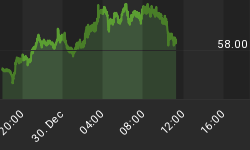The U.S. Dollar is trading sharply higher against most major currencies as investors shed risk, encouraged by the news that China's Leading Economic Index missed pre-report guesses, signaling that growth in the country is not likely to accelerate.
Besides the shedding of higher risk assets, investors are pressuring the Euro because of European bank funding issues and stress test results. Technically the Euro turned the main trend down on the daily chart when it pierced the former main bottom at 1.2209. A 50% level at 1.2171 limited losses and triggered some light short-covering. This area is not likely to hold because of the record number of shorts in the market. Expectations are for the EUR USD to feel more pressure down to 1.2102.
The projected slowdown in China comes at a time when Germany is calling for cost cutting and austere financial measures. These measures by themselves are expected to slow down the Euro Zone economy so expect the economic issues in this area to be magnified.
Some say that a cheaper Euro is good because it will eventually allow the Euro Zone to "export" its way out of its economic down turn. This theory will only work if there is demand from the rest of the world. A slowdown in demand from China or the U.S. will mean the Euro Zone recovery will take longer or the Euro will have to get cheaper and extremely attractive.
The falling equity markets and a bleak outlook for global economic growth are helping to drive down the USD JPY. Traders are dumping higher yielding currencies in favor of the lower-yielding Japanese Yen. In addition, investors are shedding risky stocks and paying back money borrowed from Japanese banks. The overnight weakness has the Dollar/Yen in a position to break through the last main bottom at 88.14. This move could trigger an acceleration to the downside and is likely to take place in the event of a stock market crash.
Fundamentally the USD CHF is under pressure because of the strong outlook for the Swiss economy. Apparently new data is showing that the strong Swiss Franc has had a limited negative effect on the Swiss economy. This means the Swiss National Bank is unlikely to continue to intervene on behalf of its currency. Traders bought the Franc on the news.
Technically, the USD CHF is in a downtrend but oversold. In addition, it is also finding support at a 50% price level at 1.0804. Watch for a possible technical bounce off this level, but the trend is not likely to change to up unless 1.1137 is violated. A failure to hold 1.0804 should fuel downside momentum to 1.0592.
The news about China is having a negative influence on the AUD USD. Calls for a slow down in the growth of China's economy are likely to hurt Australian exports. This is triggering a sharp sell-off overnight.
Based on the short-term range of .8081 to .8858, expectations are for this market to continue to weaken into a retracement zone at .8469 to .8378.















